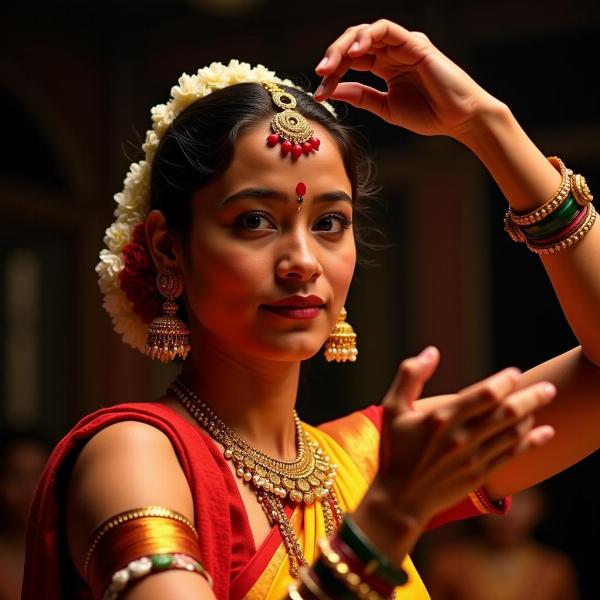The phrase “amazing dance” translates beautifully into Hindi, capturing the essence of captivating movement and artistic expression. Understanding the nuances of how Hindi speakers express admiration for dance provides insight into the rich cultural tapestry of India, where dance is not just entertainment, but a deeply ingrained form of storytelling, devotion, and celebration. Let’s explore the various ways to say “amazing dance” in Hindi and delve into the vibrant world of Indian dance.
Expressing “Amazing Dance” in Hindi
Several Hindi words and phrases convey the meaning of “amazing dance.” Here are some popular choices:
- शानदार नृत्य (shaandaar nritya): This translates directly to “splendid dance” and is a common way to praise a performance.
- अद्भुत नृत्य (adbhut nritya): Meaning “wonderful dance,” this emphasizes the awe-inspiring quality of the performance.
- बेहतरीन नृत्य (behatarin nritya): This means “excellent dance” and highlights the skill and precision of the dancers.
- लुभावना नृत्य (lubhaavana nritya): This phrase translates to “enchanting dance,” focusing on the captivating and mesmerizing aspect of the performance.
- मनमोहक नृत्य (manmohak nritya): Meaning “fascinating dance,” this emphasizes the dance’s ability to captivate the mind and heart.
Exploring the World of Indian Dance
India boasts a diverse range of dance forms, each with its unique style, costumes, and storytelling traditions. From the graceful movements of Bharatnatyam to the energetic rhythms of Bhangra, Indian dance is a testament to the country’s rich cultural heritage.
Classical Dance Forms
Classical Indian dances are steeped in history and tradition, often drawing inspiration from Hindu mythology and scriptures. These dances are highly structured and require years of dedicated training to master. Some prominent classical dance forms include Bharatnatyam, Kathak, Kathakali, Kuchipudi, Manipuri, Mohiniyattam, and Odissi.
Folk Dances
Folk dances are an integral part of Indian culture, reflecting the traditions and customs of different regions. These dances are often performed during festivals and celebrations and are characterized by their vibrant energy and simple yet expressive movements. Examples include Bhangra from Punjab, Garba from Gujarat, and Bihu from Assam.
What Makes Indian Dance so Amazing?
The beauty of Indian dance lies in its ability to convey complex emotions and narratives through intricate hand gestures (mudras), expressive facial expressions (abhinaya), and rhythmic footwork. The elaborate costumes, traditional music, and spiritual significance further enhance the overall experience.
How is “Amazing Dance” Used in Everyday Conversations?
Imagine attending a captivating performance of Kathak. You might exclaim to your friend, “वाह! क्या शानदार नृत्य है! (Waah! Kya shaandaar nritya hai!)” – “Wow! What an amazing dance!”
Or, after watching a mesmerizing Bharatnatyam recital, you might say, “यह नृत्य वाकई मनमोहक था! (Yah nritya vaakai manmohak tha!)” – “This dance was truly fascinating!”
 Expressions in Indian Dance
Expressions in Indian Dance
Conclusion
“Amazing dance” in Hindi encompasses a wealth of expressions that reflect the profound impact of dance on Indian culture. Whether it’s the technical brilliance of a classical performance or the vibrant energy of a folk dance, Indian dance continues to captivate and inspire audiences worldwide.
FAQs
- What is the most popular classical dance in India? Bharatnatyam is widely considered one of the most popular and well-known classical Indian dance forms.
- What is the significance of mudras in Indian dance? Mudras are hand gestures that convey specific meanings and emotions, playing a crucial role in storytelling within Indian dance.
- Are there any Bollywood dance forms? While Bollywood draws inspiration from various dance styles, it doesn’t have specific “forms” in the same way classical or folk dances do. It’s more of a fusion style.
- Where can I learn Indian dance? Many dance schools and academies across India and internationally offer classes in various Indian dance forms.
- What is the difference between Kathak and Kathakali? Kathak, originating in North India, emphasizes rhythmic footwork and storytelling, while Kathakali, from Kerala in South India, is known for its elaborate costumes, makeup, and dramatic performances.
- What is the best time to see Indian dance performances? Many major dance festivals take place throughout the year in India, offering excellent opportunities to witness different dance forms.
- How can I appreciate Indian dance better? Learning about the history, mythology, and symbolism associated with each dance form can enhance your appreciation and understanding.
About Meaning-Hindi.in
Meaning-Hindi.in provides high-quality translation services between Hindi and various other languages. We specialize in business and commercial document translation, certified and legal document translation, technical and user manual translation, website and localization translation, educational and academic document translation, express translation, and specialized translation services. Our team of expert linguists ensures accurate and culturally sensitive translations that meet your specific needs. Need help with translating your documents related to Indian culture, including descriptions of amazing dance performances? Contact us today! Email: [email protected], Phone: +91 11-4502-7584. Meaning-Hindi.in is your trusted partner for all your Hindi translation needs.